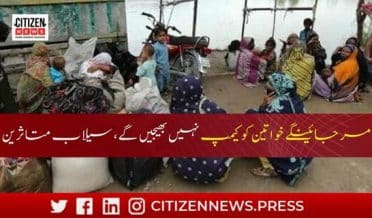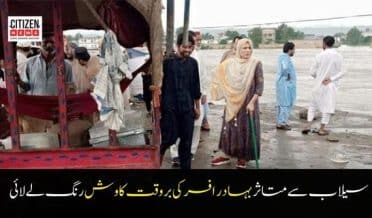The world will be increasingly hungry and thirsty: demographic projections indicate that by 2050 global food production will have to double compared to today. And it will have to be done in a sustainable way, which makes this crucial challenge for humanity even more difficult. One way to reconcile the increase in food production and the protection of the environment and biodiversity is to act on irrigation:
today 40% of food is produced by irrigated agriculture, which occupies 22% of cultivated land and counts for 90% of anthropogenic freshwater consumption. The challenge to feed the world in a “green” way is not to expand the extent of agricultural land, as this would damage natural ecosystems and biodiversity, but to intensify agricultural production in a sustainable way. increasing the percentage of agricultural land irrigated efficiently. One study published in Environmental Research by Lorenzo Rosa, 29, research director of the department of global ecology at Stanford’s Carnegie Institution for Science, shows how improving the efficiency of water use in agriculture can save both our boards that the Planet.
What is the main problem you are applying to?
Sub-Saharan Africa yields are not maximized due to a lack of water and nutrients. So, if we know where to implement policies to bring water through irrigation, we can increase agricultural yields and thus avoid the expansion of agriculture with low yields in green lungs – such as those in the Amazon, Indonesia, or the forest. Congo – help us mitigate climate change by absorbing CO2, and in addition, they provide ecosystem services such as the regulation of the water cycle and the defence of biodiversity. “
What is meant by” sustainable intensification of agriculture “
? you use water that is renewed every year with the hydrological cycle. Therefore, irrigation must not subtract too much water from the “minimum vital outflows” of rivers (ie the flow rate that guarantees the maintenance of the chemical-physical characteristics of water courses), nor must it excessively reduce the levels of the aquifers “.
the approach you have drawn up a global map that shows the areas that have the most potential, if we act on irrigation,
sustainable water is greater in demand, and there is potential there to increase agricultural production at a certain time of the year. Also because the availability of water varies throughout the year: in January there may be an abundance of water but it is no longer available in July, so maximizing agricultural production should store water in the good months – for example in dams, which however are limited in number and conflict with use for hydroelectricity, or in aquifers – to then use the surplus when needed “.
So why will water storage for agricultural use be increasingly important?
“It must be understood that with climate change we may perhaps have the same annual amount of rainfall, but instead of being distributed in the months when it could be used more for agriculture, that water will perhaps be distributed all in a single month, perhaps sooner. of the beginning of cultivation. This is why storing water will be essential. The new approach is the storage of water underground, in aquifers. When it rains a lot, these soils are flooded which – in those periods of heavy rain – are usually not cultivated. and that water will seep into the aquifer. From where it can then be pumped out when it is needed. Here in California, for example, maybe you only have a week of heavy rain in January, which creates flooding. Instead of letting it flow. this water in the sea,it can be brought, using irrigation channels, to the field when it is not cultivated: the water will filter into the aquifer and then it can be extracted in the summer to make the plants grow “.
How can irrigation be improved?
And the pipes can also be buried so that the water reaches the roots directly without evaporating. Fertilizers can also be added to the water, a strategy said fertigation. It is a more expensive system than the first two, and it takes energy to push the water through the pipes, but it is very efficient (90%). The World Bank suggests using drip irrigation by extracting the energy needed for pumping from solar panels. So that every field has energy self-sufficiency “.
By optimizing irrigation and water storage in the areas that you have identified as having the greatest potential, how much can world agricultural production be increased?
“Even in the pessimistic scenario that sees the average temperature in 2050 at +3 degrees from the pre-industrial level, in 2050 we will be able to feed 1.2 billion more people thanks to the storage of water for several months and 0.2 billion people by acting on the ‘irrigation”.
How can we understand the importance and urgency of this research?
“From the strong interest shown, for example by the World Bank, to invest in irrigation in areas such as those indicated by our study, for example in Nigeria. There is also a lot of potential in Ukraine, and I have been contacted recently because in Ukraine’s reconstruction plan we want to invest in irrigation “.
How did you come to study solutions to reconcile food security and the environment?
“I graduated in environmental engineering from the Politecnico di Milano, and I also obtained a master’s degree in Milan with a very particular program: I chose a combination of courses on climate solutions that dealt with various subjects including chemistry, energy, and others. I did my doctorate at the University of California at Berkeley, and a year of post-doctorate at the Federal Polytechnic of Zurich, where I did research on climate mitigation. My research has gradually focused on the link between water, food and energy. January of this year I was called by the Carnegie Institution for Science – an institute founded by philanthropist Andrew Carnegie, a tycoon of steel mills in the last century – and here I am principal investigator: I’m building a group to study both mitigation and adaptation solutions for climate change. “
When did you start getting interested in climate?
” I’m from Carano, a mountain village of a thousand souls, in the province of Lecco. And from an early age, I was passionate about nature: I was always in the family garden, with the animals, or in the woods. Then at the end of high school, the tutor who had the task of helping the students to choose the right faculty advised me, given my strong interest, in environmental engineering. I remember friends making fun of me in 2011 by saying that environmental engineering was not the most important of engineering. Today, however, everything has changed: luckily we are all much more aware of the need for a sustainable future “.

















